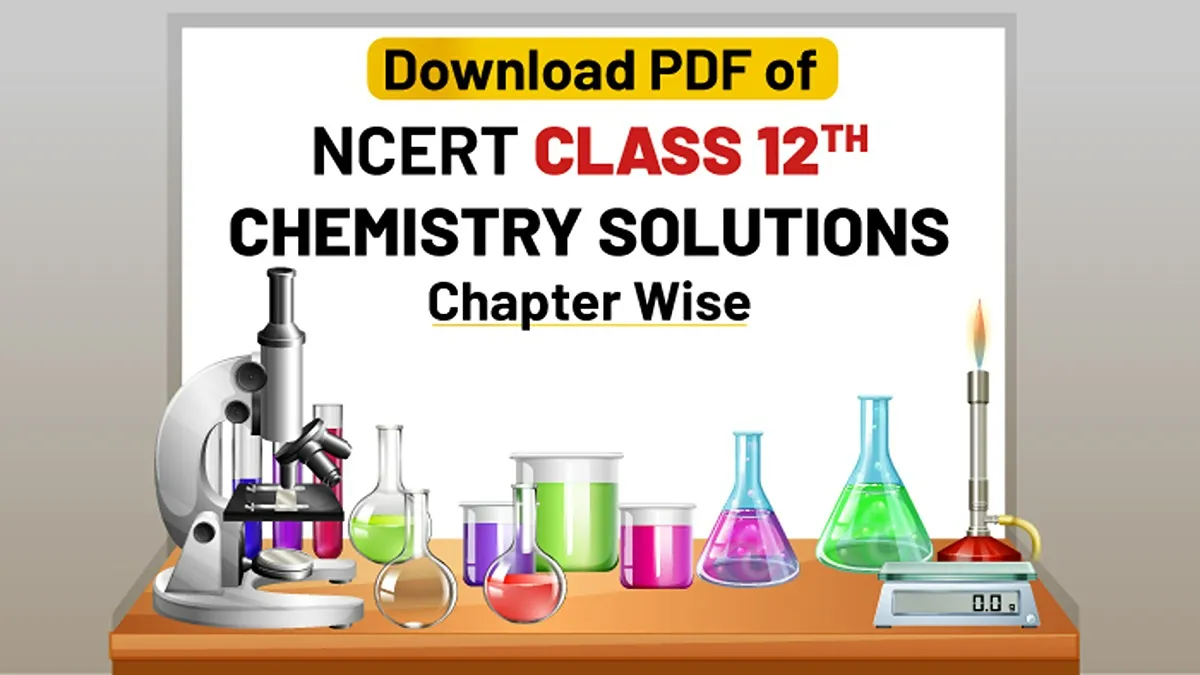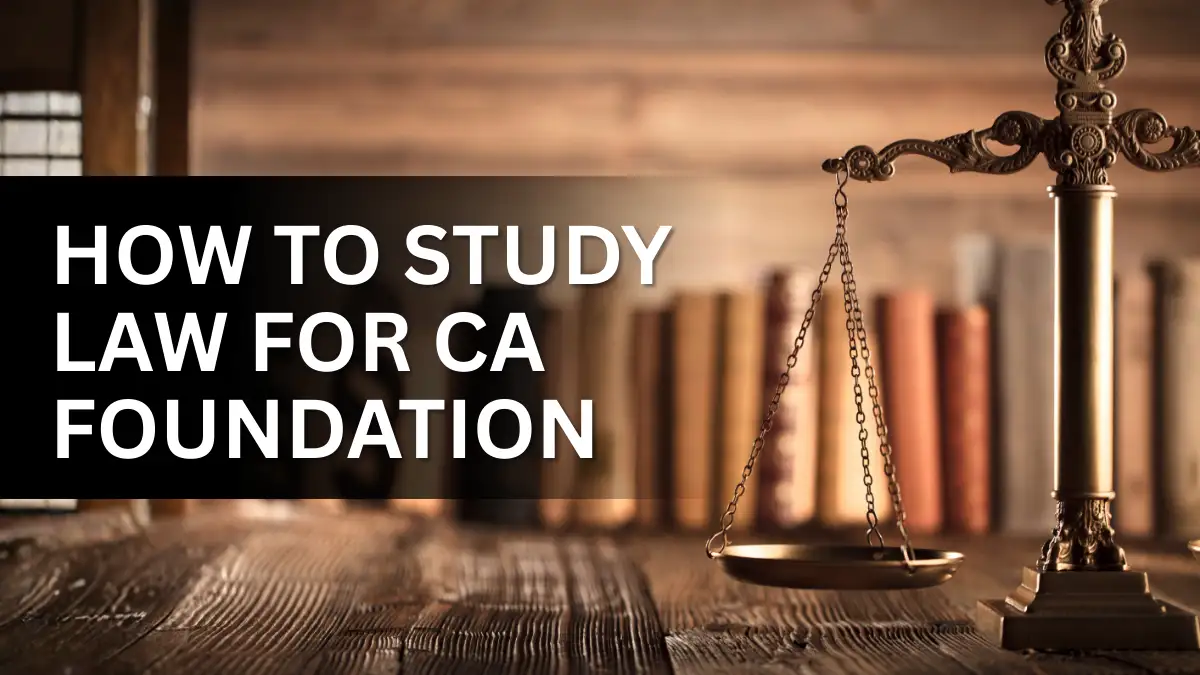The NCERT Class 12 Chemistry solutions help students to easily adapt the concepts. The intent is to provide students to know how to answer questions for the coming exams. Chemistry is a very complex subject of Science. CA Wizard makes sure that the NCERT class 12 chemistry solutions help students to correctly answer the questions with a logical and methodological approach. The NCERT class 12th chemistry solutions form a base to develop the fundamental understanding of the subject.
CA Wizard has come up with the Solutions of class 12 Chemistry NCERT chapter-wise pdf download. Students can download the NCERT class 12 chemistry solution for each of the chapters from the links given in the table below. The NCERT class 12 chemistry solutions pdf provided by the CA Wizard is free for all students.
CA Wizard is one such online educational institution that guides students with the preparation tips for class 12 exams. CA Wizard offers the best courses after 12th for science and commerce students. It also provides career options for students with subjects like PCM, PCB, and PCMB.
Students can follow CA Wizard for the updated information regarding NCERT class 12 Chemistry solutions and for more information related to the subject.
Download PDF of NCERT Class 12 Chemistry Solutions
The NCERT class 12th chemistry solution is designed in such a way to guide students to write incisive and to the point answers. From the given links below, students can easily download the NCERT class 12 chemistry solution pdf.
| ncert class 12 chemistry chapter 1 solutions- The Solid State | PDF Download |
| ncert class 12 chemistry chapter 2 solutions-Solutions | PDF Download |
| ncert class 12 chemistry chapter 3 solutions- Electrochemistry | PDF Download |
| ncert class 12 chemistry chapter 4 solutions- Chemical Kinetics | PDF Download |
| ncert class 12 chemistry chapter 5 solutions- Surface Chemistry | PDF Download |
| ncert class 12 chemistry chapter 6 solutions- General Principles and Processes of Isolation of Elements | PDF Download |
| ncert class 12 chemistry chapter 7 solutions- The p-Block Elements | PDF Download |
| ncert class 12 chemistry chapter 8 solutions- The d & f Block Elements | PDF Download |
| ncert class 12 chemistry chapter 9 solutions- Coordination Compounds | PDF Download |
| ncert class 12 chemistry chapter 10 solutions- Haloalkanes and Haloarenes | PDF Download |
| ncert class 12 chemistry chapter 11 solutions- Alcohols, Phenols, and Ethers | PDF Download |
| ncert class 12 chemistry chapter 12 solutions- Aldehydes, Ketones, and Carboxylic Acids | PDF Download |
| ncert class 12 chemistry chapter 13 solutions- Amines | PDF Download |
| ncert class 12 chemistry chapter 14 solutions- Biomolecules | PDF Download |
| ncert class 12 chemistry chapter 15 solutions- Polymers | PDF Download |
| ncert class 12 chemistry chapter 16 solutions- Chemistry in Everyday Life | PDF Download |
NCERT Class 12 Chemistry Marks Distribution
| Chapters | Marks Allotted |
| Chapter 1 The Solid State | 5 |
| Chapter 2 Solutions | 4 |
| Chapter 3 Electrochemistry | 4 |
| Chapter 4 Chemical Kinetics | 4 |
| Chapter 5 Surface Chemistry | 5 |
| Chapter 6 General Principles and Processes of Isolation of Elements | 4 |
| Chapter 7 p Block Elements | 3 |
| Chapter 8 d and f Block Elements | 7 |
| Chapter 9 Coordination Compounds | 3 |
| Chapter 10 Haloalkanes and Haloarenes | 3 |
| Chapter 11 Alcohols, Phenols and Ethers | 3 |
| Chapter 12 Aldehydes, Ketones and Carboxylic Acids | 3+2 |
| Chapter 13 Amines | 2+4+4 |
| Chapter 14 Biomolecules | 2 |
| Chemistry Chapter 15 Polymers | 5 |
| Chapter 16 Chemistry in Everyday Life | 3 |
NCERT Class 12 Chemistry Chapter-Wise: Detailed Summary
With the NCERT class 12th chemistry solutions, it is very essential for the students to have a knowledge about what every chapter deals with. This will help students to easily understand the concept of each chapter.
| Chapter Name | Detailed Summary |
| Chapter 1 The Solid State | This chapter deals with the solid-state. It consists of 11 subtopics. This chapter deals with crystalline and amorphous solids, as well as imperfections in solids. It explains the unit cell in detail and then builds up to explain the solid-state. The solutions are made in accordance with the NCERT text. It justifies the concepts explained in the textbook and helps the students reinforce the fundamentals. |
| Chapter 2 Solutions | The second chapter deals with types of solutions, and their properties. The concepts dealt with are Raoult’s law, the concentration of solutions, the vapor pressure of liquid solutions, abnormal molar masses, and colligative properties. The back and in-chapter exercises are made to reinforce the concepts, and the solutions aid the students in the same. This chapter promises a chunk of 5 marks in the Board exam. |
| Chapter 3 Electrochemistry | This chapter deals with the electrochemical cell. Students also learn about the galvanic cell and the electrolytic cell. The chapter explains the standard potential of the cell, Gibbs energy of cell reaction, and the relation with the equilibrium constant. The students will learn the Kohlrausch Law and its applications. |
| Chapter 4 Chemical Kinetics | This chapter deals with the kinetics, or the rate of a reaction. The topics covered include the factors affecting the rate of a reaction, the integrated rate equation, Pseudo First Order reactions, and the collision theory of chemical reactions. This chapter is responsible for an engineering and medical sciences point of view too. |
| Chapter 5 Surface Chemistry | The fifth chapter deals with emulsions, adsorption, adsorption isotherms, factors controlling adsorption of gases and liquids, and catalysts and their role in the industry. The chapter further explores colloids and their applications. |
| Chapter 6 General Principles and Processes of Isolation of Elements | This chapter deals with the inorganic chemistry portion of the syllabus. The chapter explores the occurrence of metals, the concentration of ores, cleaning and extraction of crude metal from ores, thermodynamic and electrochemical principles of metallurgy, and the refining process. |
| Chapter 7 p Block Elements | The chapter deals with the Group 15 elements, Oxides of Nitrogen, Allotropes of Phosphorus, Group 16 elements, simple oxides, allotropes of sulfur, chlorine, and other elements. |
| Chapter 8 d and f Block Elements | The chapter deals with the properties of transition elements, colored ions and complex compounds, variation in sizes of elements, ionization enthalpies, magnetic properties, and oxidation states. The chapter deals with d block elements and their properties and variations. |
| Chapter 9 Coordination Compounds | The compounds dealt with here are relative and the concepts are novel, and therefore the students are required to pay special attention to the chapter. The chapter explains Werner’s theory of Coordination compounds, Bonding in Coordination compounds, Nomenclature, Isomerism, and others. The chapter can be well understood through the exercises and solutions that help to reinforce the fundamentals. |
| Chapter 10 Haloalkanes and Haloarenes | Students learn the concepts of IUPAC nomenclature of Haloalkanes and Haloarenes. They will also learn the applications of organometallic reactions, preparation of haloalkanes and haloarenes, and stereochemistry. The students also learn to design the reaction mechanism. |
| Chapter 11 Alcohols, Phenols, and Ethers | This chapter also begins with the IUPAC nomenclature of alcohols, phenols, and ethers. They also deal with the preparation of alcohols, phenols, and ethers. They further explore the properties of the same. |
| Chapter 12 Aldehydes, Ketones, and Carboxylic Acids | The next ones in line are aldehydes, ketones, and carboxylic acids. The IUPAC names, to start with, the chapter explores their preparation methods, the key reactions, characteristic tests, and other properties. |
| Chapter 13 Amines | The ten subtopics include the preparation methods, the physical properties, the chemical reactions, the methods to prepare diazonium salts, the importance of diazonium salts in the synthesis of Aromatic Compounds. |
| Chapter 14 Biomolecules | In this chapter, students learn about molecules like glucose, fructose, starch, glycogen, etc. They get to learn about the structure, the classes, and the properties of carbohydrates and proteins. They also learn about the reactions of some biomolecules. |
| Chemistry Chapter 15 Polymers | This chapter deals with the science of polymers, the various types of polymers, whether addition or condensation, linear or cross linked, their reactions, and their properties. This chapter also deals with some well-known polymers and their applications. |
| Chapter 16 Chemistry in Everyday Life | This chapter deals with the importance of chemistry in everyday life, mainly drug action, drug classification and uses, and the target interaction, along with chemicals in food and cleansing agents. |
CBSE NCERT Class 12 Chemistry Solutions- Deleted Topics
While preparing for the upcoming cbse class 12 chemistry exam, keep in mind what all topics have been removed from the syllabus this year 2020-21. Given below are all the deleted topics and chapters of the CBSE class 12 chemistry syllabus is given below:
| Chapter Name | List Of Deleted Topics |
| Chapter 1: Solid State | Electrical and magnetic properties. Band theory of metals, conductors, semiconductors and insulators and n and p-type semiconductors. |
| Chapter 2: Solutions | Abnormal molecular mass, Van’t Hoff factor |
| Chapter 3: Electrochemistry | Lead accumulator, fuel cells, corrosion, law of electrolysis (elementary idea), dry cell- electrolytic cells and Galvanic Cells |
| Chapter 4: Chemical Kinetics | Concept of collision theory (elementary idea, no mathematical treatment), activation energy, Arrhenius equation |
| Chapter 5: Surface Chemistry | Emulsion – types of emulsions, catalysis: homogeneous and heterogeneous, activity and selectivity of solid catalysts; enzyme catalysis |
| Chapter 6: General Principles and Processes of Isolation of Elements | Entire chapter |
| Chapter 7: p-Block Elements | Preparation and properties of Phosphine, Sulphuric Acid: industrial process of manufacture, Oxides of Nitrogen (Structure only); Phosphorus – allotropic forms, compounds of Phosphorus: Preparation and properties of Halides and Oxo acids (elementary idea only). |
| Chapter 8: d and f Block Elements | Chemical reactivity of lanthanides, Actinides -Electronic configuration, oxidation states, and comparison with lanthanide. Preparation and properties of KMnO4 and K2Cr2O7 |
| Chapter 9: Coordination Compounds | Structure and stereoisomerism, importance of coordination compounds (in qualitative analysis, extraction of metals, and biological system). |
| Chapter 10: Haloalkanes and Haloarenes | Uses and environmental effects of -dichloromethane, trichloromethane, tetrachloromethane, iodoform, freons, DDT. |
| Chapter 11: Alcohols, Phenols and Ethers | Uses with special reference to methanol and ethanol. |
| Chapter 12: Aldehydes, Ketones and Carboxylic Acid | —–NA——- |
| Chapter 13: Amines | Diazonium salts: Preparation, chemical reactions, and importance in synthetic organic chemistry. |
| Chapter 14: Biomolecules | Oligosaccharides (sucrose, lactose, maltose), polysaccharides (starch, cellulose, glycogen), importance of carbohydrates. Vitamins– classification and functions. Enzymes. Hormones – Elementary idea excluding structure. |
| Chapter 15: Polymers | Entire chapter |
| Chapter 16: Chemistry in Everyday life | Entire chapter |
CBSE Class 12 Chemistry: Important Questions
Given below are some of the important questions for the upcoming chemistry exam 2021:
| 1. Give 1 example each of a molecular solid and an ionic solid. 2. Explain the terms ‘Ferromagnetism’ and ‘Ferrimagnetism’. 3. Define isotonic solutions. 4. State Raoult’s law for the solution containing volatile components. Explain the similarity between Raoult’s law and Henry’s law. 5. State Nernst equation for the standard dry cell. Using this equation demonstrates that the voltage of a dry cell decreases with use. 6. Define corrosion. Explain the electrochemical theory of rusting of iron and write the reactions involved. 7. Explain ‘rate of a reaction’. Differentiate between average rate and instantaneous rate of a reaction. 8. Derive integrated rate equation for rate constant of a first order reaction. 9. Differentiate between lyophobic solution and lyophilic solution. 10. Define adsorption isotherm? Describe Freundlich adsorption isotherm. 11. What is the method used for the refining of copper metal? 12. State the principle behind the froth floatation process. What is the role of collectors in this process? 13. Which is a stronger reducing agent – SbH3 or BiH3? Why? 14. State reasons for the following: (i) Oxygen is gas but sulfur is solid. (ii) Oxygen acts as a powerful oxidizing agent. (iii) BiH3 is the strongest reducing agent amongst all the hydrides of Group 15 elements.
15. Give reasons for the following : (i) Transition metals and many of their compounds act as good catalysts. (ii) Transition metals generally form colored compounds. 16. A mixed oxide of iron and chromium is fused with sodium carbonate in free access of air to form a yellow-colored compound (A). On acidification, the compound (A) forms an orange-colored compound (B), which is a strong oxidizing agent. Identify the compound (A) and (B). Write the chemical reactions involved. 17. Write IUPAC name of the complex [Co(NH3)4Cl(NO2)]+. 18. Give one example in each of the following cases and discuss briefly the role of coordination compounds in (i) extraction metallurgy of metals (ii) analytical chemistry 19. What happens when CH3 — Br is treated with KCN? 20. Explain what happens when phenol is treated with bromine water. 21. Explain how toluene obtained from phenol. 22. Write reactions for the following conversions: (i) Phenol to anisole (ii) Propan-2-ol to 2-methylpropan-2-ol (iii) Aniline to phenol |
CBSE Class 12 Chemistry Exam: Preparation Tips
To prepare for the CBSE class 12 chemistry examination 2021 follow the preparation tips given below:
- Students must try to study chemistry daily as it is a lengthy subject. Try to finish the syllabus as early as possible.
- Try not to skip any topic or chapters except those that are removed from the chemistry syllabus.
- Study from the NCERT textbook and after completing the NCERT book, students can go for the reference book.
- Solve the questions given at every end of the chapters. Also, refer to NCERT class 12 chemistry solutions.
- Solve practice papers, mock test papers, and revision test papers.
WHY CA Wizard’s NCERT Class 12 Chemistry Solutions?
The features of downloading solutions of class 12 Chemistry NCERT from CA Wizard are as follow:
- For all reasoning questions we provide in-depth explanations.
- For numeral questions we provide step-by-step solutions.
- Incisive and to-the-point answers to all the questions.
- We have experts to answer the questions of each chapter.
- We only provide correct and verified answers.
- You will also get a free pdf to download the NCERT class 12th chemistry solutions.
Frequently Asked Questions
Q1. Is NCERT class 12 Chemistry solutions helpful for the upcoming chemistry exam?
Ans: Yes, NCERT class 12 Chemistry solutions helpful for the upcoming chemistry exam. It helps students to write a precise and to the point answer of every question.
Q2. From where can I download the NCERT class 12th Chemistry solutions?
Ans: The NCERT Class 12 Chemistry solution pdf is available on this page to download it for free.
Q3. Can students rely on NCERT class 12 solutions for the competitive exams?
Ans: Yes, class 12 competitive exams are also based on the CBSE class 12 chemistry syllabus. So students can definitely rely on the solutions of class 12 chemistry NCERT.









